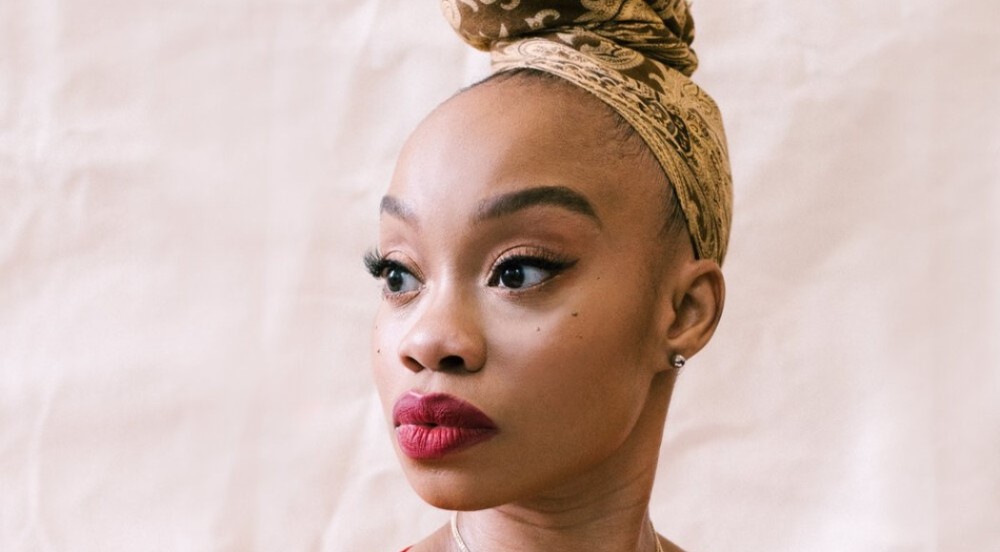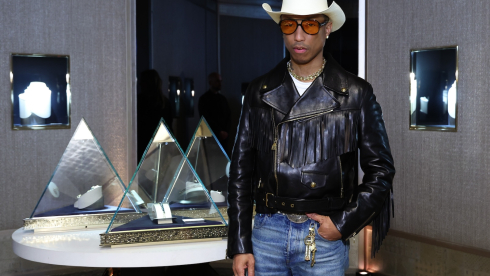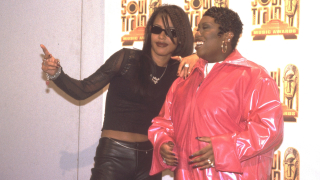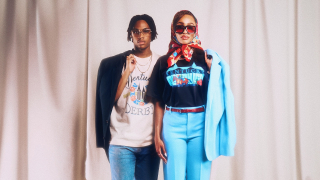In 1975, Ntozake Shange wrote her first play For Colored Girls Who Have Considered Suicide / When the Rainbow Is Enuf, which went on to gain global acclaim for decades. The production is regarded to as one of the most prolific plays in the Black American canon.
Over four decades later, For Colored Girls is returning to Broadway under the helm of Camille A. Brown who serves as both the show's choreographer and director. Brown is the founder and artistic director of Camille A. Brown & Dancers, a renowned dance company. She has made her mark through choreographing stunning pieces for respected productions such as New Second Line, Choir Boy, Fire Shut Up In My Bones, and Ma Rainey's Black Bottom— to name a few.
For the first time in over 65 years, she is the first Black woman to execute both roles in a Broadway production . EBONY sat down with Camille A. Brown to discuss the revival and what the Broadway revival of For Colored Girls means to Black women decades later.
EBONY: You will be the first Black woman to serve in the role of both director and choreographer for this production in over 60 years. What are your reflections on simultaneously stepping into this role and doing so after all this time?
Camille A. Brown: I mean, why so long? That's my first question. The last black woman to direct and choreograph was Katherine Dunham. So, for it to take this long and for me to be the person to do feels immense but it's not just about me. When I wanted to have a career in theater, I didn't necessarily believe that I could have one because it was tremendously male-dominated. There weren't as many reflections of Black women working in theater as both choreographers and directors at the same time. So to be in this moment and to sit in it feels very expansive. As my grandmother used to say, I'm very full.
So many Black women have had our own connections or have resonated with the themes of "For Colored Girls." What's your personal connection to this body of work?
My mom always used to say, "Don't ever let anyone take your stuff away," as early as I can remember. When I was choreographing for the last production I did, that's when she told me that she had gotten that phrase from "For Colored Girls" when she had seen it on Broadway. Although I didn't know it, this production has been a part of the fabric of my life for so long and it helped me in me during this entire creative process.
What has been most important during this process was creating a safe space for these actresses to connect to the material. I think one specific thing that really sticks out for me in reference to the show is how it holds space for Black women. I've felt that it was my responsibility to create a world where we were lifting up and encouraging each other as we delved into this material. I have been so deeply connected to the elements of sisterhood and empowerment while each of these individual women tell these very personal and vulnerable stories.
We've seen various renditions of the play over the years. How has your creative process for "For Colored Girls" carried on the tradition while also bring new life and perspectives into this revival?
I had to get out of my own way. Like you said, there's the movie and so many different interpretations. They say there's six degrees of separation and it feels like there's only one degree of separation with this as there's so many people that have ties to this show. It's easy to get caught up in the thoughts of " I don't want to disappoint people. Maybe I shouldn't do it that way." I finally had to say, "Camille, just do you just the way you want to enter it." A friend of mine further encouraged me to think of it as an offering. So that involves little adjustments like changing music and adding very specific rhythms to it that I heard in my head.
Normally when you start a process for theater productions, you do a read through and you sit during the table and read the script. What I decided to do is enter with what I what I love, which is movement. So we did what I call a dance through and I took the cast through all of the movements from beginning to end. I really wanted them to get a sense of what this world was going to be, which was a choreopoem leading with movement and leading with poetry as well. It's been fantastic to see them grow as artists through the text and the language but also through the movement. I'm excited to see them grow with and through the presence of the audience as well in a call and response fashion. That's what the black tradition is. So the task also became how do we let Black people know in this space— a traditionally white space— that it is okay to do participate in call and response? How do we let all the Black people in the house know that this is for you? So it's been a balance that I'm excited to see play out.
The show's final performance will be on Sunday, May 22th, 2022.













